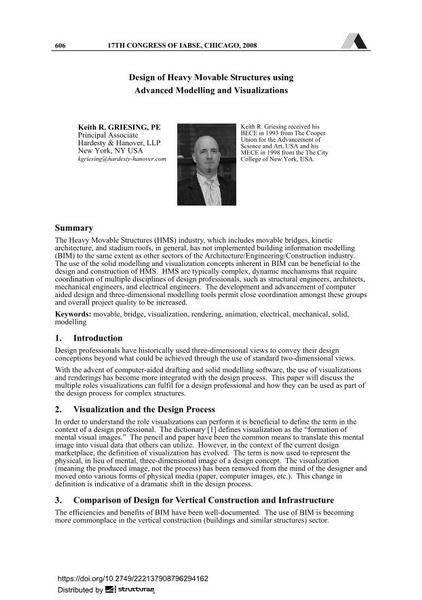Design of Heavy Movable Structures using Advanced Modelling and Visualizations

|
|
|||||||||||
Bibliografische Angaben
| Autor(en): |
Keith Griesing
|
||||
|---|---|---|---|---|---|
| Medium: | Tagungsbeitrag | ||||
| Sprache(n): | Englisch | ||||
| Tagung: | 17th IABSE Congress: Creating and Renewing Urban Structures – Tall Buildings, Bridges and Infrastructure, Chicago, USA, 17-19 September 2008 | ||||
| Veröffentlicht in: | IABSE Congress Chicago 2008 | ||||
|
|||||
| Seite(n): | 606-607 | ||||
| Anzahl der Seiten (im PDF): | 7 | ||||
| Jahr: | 2008 | ||||
| DOI: | 10.2749/222137908796294162 | ||||
| Abstrakt: |
The Heavy Movable Structures (HMS) industry, which includes movable bridges, kinetic architecture, and stadium roofs, in general, has not implemented building information modelling (BIM) to the same extent as other sectors of the Architecture/Engineering/Construction industry. The use of the solid modelling and visualization concepts inherent in BIM can be beneficial to the design and construction of HMS. HMS are typically complex, dynamic mechanisms that require coordination of multiple disciplines of design professionals, such as structural engineers, architects, mechanical engineers, and electrical engineers. The development and advancement of computer aided design and three-dimensional modelling tools permit close coordination amongst these groups and overall project quality to be increased. |
||||
| Stichwörter: |
Brücke Modellbildung
|
||||
